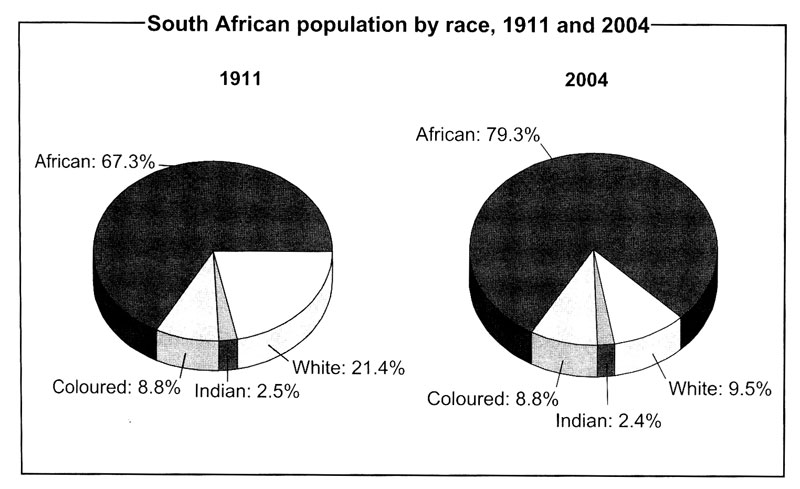From 10 to 31 October 2011, South Africa will be conducting its third census since the advent of democracy in 1994. Undertaking a census is a massive exercise and involves collecting, compiling, and analysing demographic, economic and social data about all persons living in a country. A census is usually held every five years. However, because of limited resources at the Department of Statistics South Africa (SSA), the interval period was extended to 10 years.
The post-Apartheid Government held its first population census in 1996. This was followed by its second census in 2001. A ‘Community Survey’ took the place of the 2006 census. The forthcoming 2011 Census is part of the 2010 round of African censuses aimed at generating data about the continent, which will assist governments with planning processes, policy formulations and further development. This year, in South Africa, approximatly 156 000-field workers have been recruited and they will be distributing three different questionnaires to the public enquiring about households, transient and tourist hotel and institutions.
This huge task is not the first of its kind in South Africa; census taking has a long history dating back to the 18th century. Census surveys were conducted in 1911; 1921; 1936; 1951; 1960; 1970; 1980; 1985, 1991, 1996 and 2001. However, information collected in the Apartheid era is uneven and unreliable especially with regard to the African population. Legislation such as the Native Areas Amendment Bill and the Group Areas Act skewed official statistics and grossly underestimated the number of people living in cities amongst other things.
The 1996 census was path breaking in the history of South African censuses as it was the first time that all population groups were counted. Previous censuses merely estimated the numerical size of each population group as defined by the Population Registration Act of 1950. The Population Registration Act categorised South Africans as ‘White’, ‘Coloured’, ‘Indian’ and ‘African’. Earlier censuses did not include any accurate demographic and socio-economic data. The 1999 Census in Brief report stresses the difference between pre- and post-Apartheid censuses:
‘In October 1996, South Africans were counted for the first time as citizens of a democracy. More than 100 000 people were employed to collect information on persons and households throughout the country, using a uniform methodology.’ (cited in Ebrahim-Vally, R, 1999)
The census plays a critical role in public administration and social governance. According to Statistics South Africa, the results of the 2011 census, inter alia, will be used to ensure:
- equity in the distribution of government services
- distributing and allocating government funds among various regions and districts for education and health services
- delineating electoral districts at national and local levels, and
- measuring the impact of industrial development
Statistics collected through a census are helpful in determining the approximate size of the population; racial composition; levels of education (including proficiency in languages and levels of literacy); rates of migration (including emigration and immigration); areas of residence (urban and rural); employment/unemployment rates; religious affiliation; health and welfare (fertility rates, life expectancy and the impact of HIV/AIDS for example) as well as economic growth or decline. For example, South Africa’s white population declined from 4.27 million in 1992 to 4.24 million in 2003 (a 0.7 per cent decrease). In contrast the African population has expanded by 31.5 per cent to an approximate 36.9 million people (source: MacFarlane, M, ‘Demographics’ in Kane-Berman J and Tempest J (eds), 2004).
 Graph depicting Population Trends, 1911-2004. Source: Kane-Berman J and Tempest J (eds) South Africa Survey 2003/2004, (South African Institute of Race Relations Johannesburg, 2004, p.3
Graph depicting Population Trends, 1911-2004. Source: Kane-Berman J and Tempest J (eds) South Africa Survey 2003/2004, (South African Institute of Race Relations Johannesburg, 2004, p.3
 Table estimating the South African Population by Race, 1911 and 2004. Source: Kane-Berman J and Tempest J (eds) South Africa Survey 2003/2004, (South African Institute of Race Relations Johannesburg, 2004, p. 3
Table estimating the South African Population by Race, 1911 and 2004. Source: Kane-Berman J and Tempest J (eds) South Africa Survey 2003/2004, (South African Institute of Race Relations Johannesburg, 2004, p. 3
Between 1996 and 2003, the unemployment rate rose by 39 per cent. The government sector provided 27.8 per cent of total employment in 2002, compared with 33.7 per cent in 1994 and a peak of 35.2 per cent in 1998. In 2003, 73 000 South Africans with degrees or higher qualifications were unemployed. Between 1995 and 2002 the number of learners in grade 1 dropped by 23 per cent despite the population increasing by an estimated 6 million. The above examples are indicative of the types of information that can be gleaned from censuses. Click here for more statistical data compiled from previous censuses. Census surveys enable the Government to formulate policies of good governance and ensure social justice.